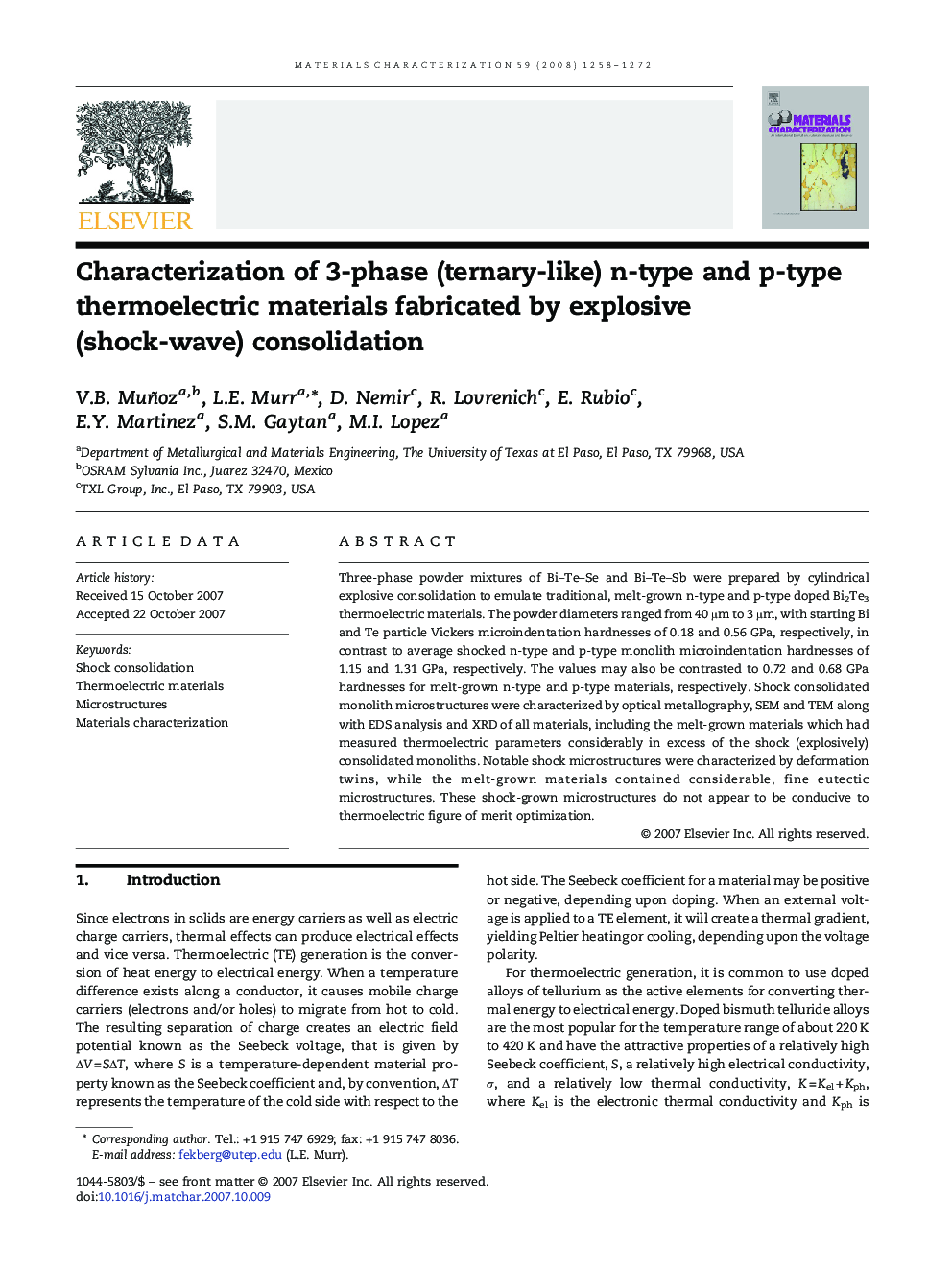| Article ID | Journal | Published Year | Pages | File Type |
|---|---|---|---|---|
| 1572765 | Materials Characterization | 2008 | 15 Pages |
Three-phase powder mixtures of Bi–Te–Se and Bi–Te–Sb were prepared by cylindrical explosive consolidation to emulate traditional, melt-grown n-type and p-type doped Bi2Te3 thermoelectric materials. The powder diameters ranged from 40 μm to 3 μm, with starting Bi and Te particle Vickers microindentation hardnesses of 0.18 and 0.56 GPa, respectively, in contrast to average shocked n-type and p-type monolith microindentation hardnesses of 1.15 and 1.31 GPa, respectively. The values may also be contrasted to 0.72 and 0.68 GPa hardnesses for melt-grown n-type and p-type materials, respectively. Shock consolidated monolith microstructures were characterized by optical metallography, SEM and TEM along with EDS analysis and XRD of all materials, including the melt-grown materials which had measured thermoelectric parameters considerably in excess of the shock (explosively) consolidated monoliths. Notable shock microstructures were characterized by deformation twins, while the melt-grown materials contained considerable, fine eutectic microstructures. These shock-grown microstructures do not appear to be conducive to thermoelectric figure of merit optimization.
